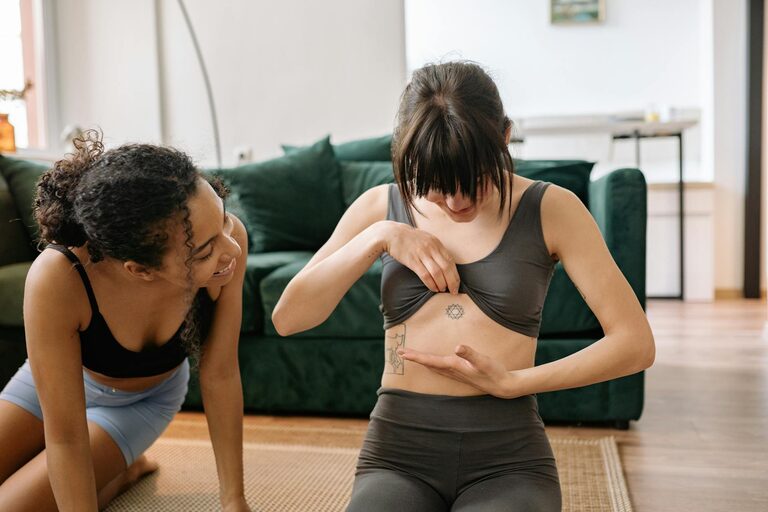Stretching is a gentle yet powerful way to improve your body’s flexibility, relieve muscle tension, and promote overall health. Whether you’re new to physical activity or just looking to add some movement to your daily routine, stretching at home is an accessible and effective option. This beginner’s guide will walk you through the basics of stretching, explain why it matters, and provide simple routines to get you started comfortably and safely.
Why Stretching Matters
Stretching is more than just a warm-up or cool-down step before workouts. It offers multiple benefits, including:
– Improved flexibility: Regular stretching can increase your range of motion, making everyday movements easier.
– Reduced muscle tension: Stretching helps release tightness and stiffness, promoting relaxation.
– Better posture: Stretching tight muscles, especially in areas like the chest and hips, can improve your alignment.
– Enhanced circulation: Stretching increases blood flow to your muscles, which supports recovery and energy.
– Stress relief: Gentle movements combined with mindful breathing can calm the mind and reduce stress levels.
Understanding these benefits can motivate you to make stretching a consistent part of your home routine.
Preparing to Stretch: Key Tips
Before diving into your stretching practice, keep these guidelines in mind:
- **Warm up briefly:** Stretching cold muscles can lead to injury. Do 3–5 minutes of light activity like walking or marching in place to warm up.
- **Wear comfortable clothing:** Loose or stretchy clothes help you move freely.
- **Find a quiet space:** Choose a spot with enough room and a flat surface, like a yoga mat or carpet.
- **Use props if needed:** A towel, strap, or cushion can assist especially when you’re just starting.
- **Listen to your body:** Stretch to the point of gentle tension, not pain. Stop or ease off if you feel discomfort.
Types of Stretching to Know
There are different ways to stretch, each with its own purpose:
Static Stretching
This involves holding a stretch position for 15–60 seconds. It’s ideal for improving flexibility and is commonly done after workouts or during relaxation.
Dynamic Stretching
Dynamic stretches involve controlled, gentle movements through your full range of motion. These prepare your body for activity and help increase blood flow.
Active Stretching
Active stretches require you to hold a position using your own muscle strength without assistance. This helps build strength and flexibility simultaneously.
Passive Stretching
Passive stretches use an external force like gravity, a strap, or a partner to hold the stretch position. It’s helpful to deeply relax muscles.
For beginners focusing on flexibility at home, static and gentle dynamic stretches are good starting points.
Simple Stretching Routine for Beginners
Here’s an easy-to-follow routine you can do in about 10–15 minutes. Remember to breathe deeply throughout each stretch.
1. Neck Stretch
– Sit or stand tall.
– Slowly tilt your head to the right, bringing your ear towards your shoulder.
– Hold for 20 seconds.
– Repeat on the left side.
2. Shoulder Rolls
– Lift your shoulders up towards your ears.
– Roll them back and down in a smooth circular motion.
– Do 10 rolls, then reverse direction.
3. Chest Opener
– Clasp hands behind your back.
– Gently lift your chest and squeeze shoulder blades together.
– Hold for 30 seconds.
4. Cat-Cow Stretch (Spine Mobility)
– Get on hands and knees in a tabletop position.
– Inhale, arch your back, lifting your head and tailbone (Cow).
– Exhale, round your spine, tucking your chin and pelvis (Cat).
– Repeat 8–10 times.
5. Seated Hamstring Stretch
– Sit on the floor with legs extended straight.
– Reach toward your toes while keeping your back straight.
– Hold for 30 seconds. Don’t force it; go as far as comfortable.
6. Butterfly Stretch (Inner Thigh)
– Sit with the soles of your feet together and knees out to the sides.
– Hold your feet and gently press knees toward the floor.
– Hold for 30 seconds.
7. Child’s Pose
– From tabletop, sit back on your heels and stretch your arms forward.
– Relax your forehead on the floor.
– Hold for 30 seconds to 1 minute.
Tips to Stay Consistent
Building a stretching habit doesn’t have to be complicated. Here are ways to keep motivated:
– Set a schedule: Choose a regular time each day, like morning or before bed.
– Use reminders: Set phone alarms or sticky notes as cues.
– Start small: Even 5 minutes of stretching daily helps build momentum.
– Combine with other habits: Stretch while listening to music or watching a show.
– Track progress: Note improvements in flexibility or how you feel after stretching.
– Be patient: Flexibility improves gradually, so enjoy the process.
When to Be Cautious
Though stretching is generally safe, be mindful if:
– You have an injury or chronic pain — consult a healthcare professional before starting.
– You feel sharp or intense pain during a stretch — ease off immediately.
– You’re unsure about your technique — consider guided videos or an instructor for help.
Final Thoughts
Stretching at home is an easy, low-cost way to care for your body and mind. With just a few minutes a day, you can boost your flexibility, reduce tension, and move more comfortably in daily life. Remember to approach stretching gently, listen to your body, and enjoy the process. Your body will thank you!
—
For more beginner-friendly fitness tips and wellness guides, keep following our blog!

